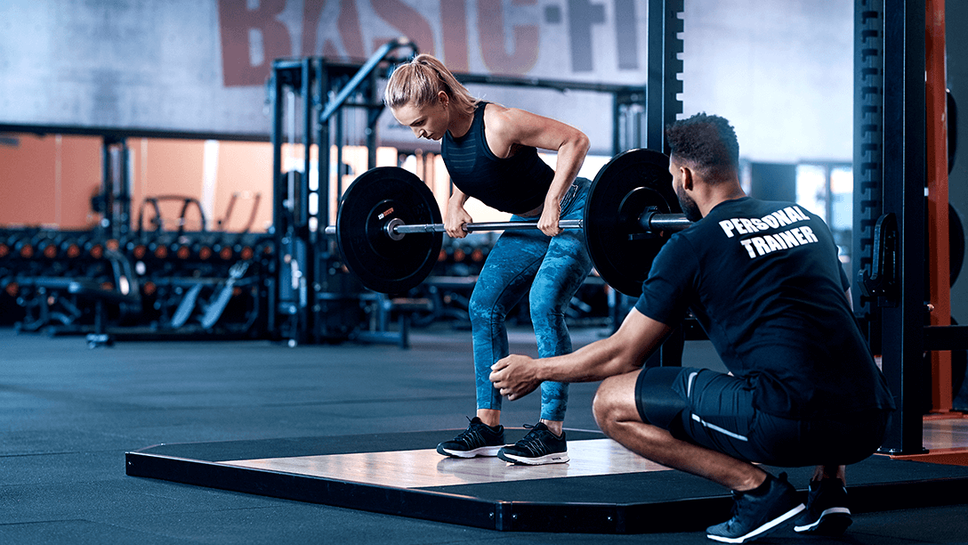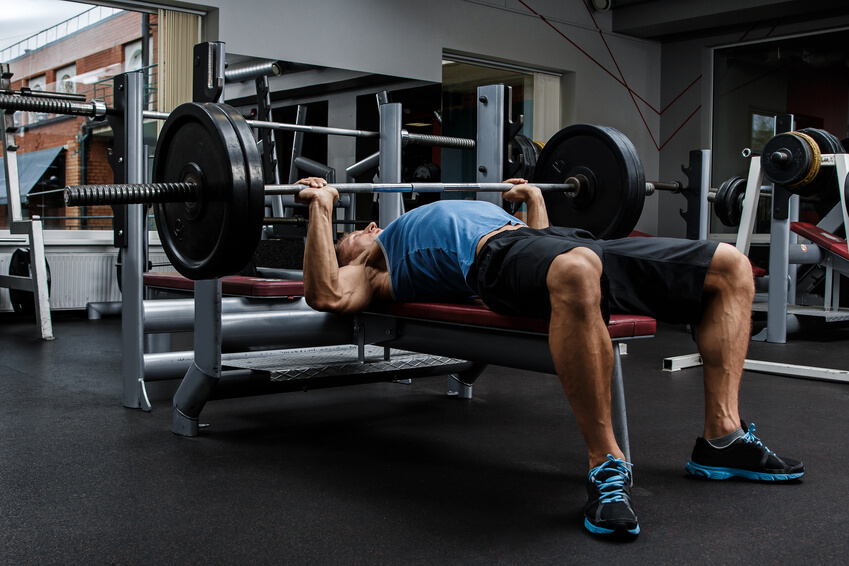
What does it take to build muscle? Maybe you are already familiar with the basics and know that a calorie surplus is helpful, that it only works with progressive training of the important basic exercises , that you consistently stay on the ball and on his regeneration must pay attention. Yes, these are the well-known elementary basics of muscle building , without which it cannot work.
But it is about more than that. If you are one of those people who have problems with building muscle, are not satisfied with their progress (or do not make any), I have three essential ones for you below Muscle building tips that are almost always overlooked and therefore play a decisive role in the stagnant muscle building . With their help, you will finally make strong progress and benefit from the positive effects of muscle building.
3 sets of 12 repetitions is THE standard scheme for building muscle, which is preached like a prayer wheel. With 8-12 repetitions one generally speaks of the ” hypertrophy area “, ie the muscle building zone, because here (allegedly) mechanical stress and the time under tension are in an optimal relationship and therefore the best Growth stimuli are set.
Well, this rep range certainly has its place. However, one of the decisive keys to building muscle is also building strength! This has been confirmed time and again over the years: If you want to build muscle, you also have to train with heavy weights (3-6 repetitions) and significantly gain strength.

Both processes are closely coupled and Inseparable for the average recreational athlete .
The stronger you get, the more weight you can use even with moderate training sets (8-12 reps) and the stronger the growth stimuli. Heavy weight training also targets the largest muscle fibers.
But why, some might rightly object, are bodybuilders more muscular than weightlifters and powerlifters? Based on this fact, one could actually quickly draw wrong conclusions. But two points are forgotten:
- They are very advanced athletes. They can strain their muscles with extremely high intensity and extremely high volume. These techniques, which stimulate muscle building but decouple it to a certain extent from strength building, do not work for normal recreational athletes. They only work for very advanced athletes, to whom the second point also applies.
- You take Steoride. This is the only way you can (and MUST because of the unnaturally high muscle mass) you can sometimes complete 16 or more intensive sets, often even using intensity techniques, for individual muscle groups and that’s the only reason why you react Body on with further muscle building.
The combination of these two points changes the game. But natural recreational athletes are very wrong if they orientate themselves on it.
It’s very simple:
If you want to build muscle, first of all focus on getting really strong with the important exercises.
Muscle build-up comes naturally with a sensible diet.
Muscle building is not only based on strength, but also on endurance. I know that especially men who really want to have more muscles often don’t feel like doing endurance training because they don’t see any direct sense in it.
But endurance is extremely important for building muscle! On the one hand, of course, to strengthen the heart and, on the other hand, to expand the capillary network – i.e. for the supply infrastructure of the muscles.
As you probably know, muscles are rather expensive structures in the body. They are far more active than fat tissue and need more energy even when resting. That is the reason why muscle building based on poor endurance is very sluggish runs – the body naturally only builds up that which can be well taken care of!

Therefore, the faster the muscles are built, the better the endurance basis (and thus the supply infrastructure). This can also be observed again and again in practice: Those who already have a good level of stamina (I have seen it very often with footballers) build muscles much faster than unsporting beginners.
For you that means that in addition to heavy and moderate weights also strength training with light weights (15-25 repetitions or techniques such as circles, “As Many Rounds as Possible” (AMRAP) etc.) as well as supplementary cardio are necessary and helpful to build muscle effectively. If you know how to do it, muscle building and endurance training can be combined .
Quite a few believe that building muscle is above all training and nutrition. They optimize both and often still make no progress because they neglect the third fundamental factor, regeneration !
Now, of course, “optimize regeneration” is worded very generally. What does that actually mean? You probably know that it is essential to ensure that you have enough quality sleep, as this time is the most important regeneration window .
Well, sleep is closely related to the tip I’m going to give you now. It is one of the most important regeneration and therefore muscle building tips and I cannot overestimate its importance: Take care of mini-breaks in everyday life.
“Mini-Breaks” are short moments spread over everyday life in which you consciously take the tension out of all the muscles of your body as best you can.
Let’s not kid ourselves: We live in stressful times.
A side effect of our rather unnatural lifestyle is a permanently increased activity of the vegetative nervous system, so that the so-called symphaticus dominates.
This part of this nervous system puts the body into the so-called “fight or flight” mode: This increases its performance and provides higher muscle tone . Ultimately, that means nothing else than: Your body is under tension.
If you actually had to fight or flee, that would be very helpful. But if you sit in the office all day, mainly suffering from mental stress and your body is under constant current , then undesirable consequences occur:
- poor regeneration
- increased cortisol levels
- low testosterone levels
- bad sleep
- Declining libido
- Headache
- Dizziness
- Tinnitus
- Tensions
- and of course stagnant muscle building!

That is why it is important to consciously counteract this in everyday life, to take the tension out and defeat the opponent, the parasympathetic nervous system , who is responsible for recovery and regeneration, to activate.
So in everyday life, consciously take the tension out of your legs, arms, back and, above all, your neck and face muscles.
With the facial muscles you feel the relaxation or the previously applied tension (the difference) very clearly. If you consciously relax your face in everyday life, you will first feel the constant states of tension these muscles are often under.
TIP: You can even try this for yourself right now – it’s a real eye-opener! You can literally notice how a load drops and how large parts of the body almost automatically follow the face when relaxing!
In addition to the basics of muscle building , you have now learned three tips for building muscle that are otherwise often forgotten and that those who complain of a lack of progress usually do not implement adequately.
However, these tips should also be implemented sensibly. While you can sprinkle the mini-breaks over everyday life as often as possible so that it becomes a habit, the other two tips have to be implemented carefully.
Muscle building training also works with a one-dimensional approach (example 3 × 12 reps), but only for a short time before the body adapts and progress comes to a standstill.
It is more effective, more sustainable and healthier in the long term to design the training multidimensionally and to include a broader repetition spectrum. That not only makes you strong and muscular, but also robust and fit.
With these three often overlooked muscle building tips , which are among the most common causes of stagnation, you can optimize training and regeneration and immediately achieve better results in muscle building .
If you want to know what such varied muscle building training plans look like, I can recommend the Adonis Guide, which has fat loss and muscle building plans for a whole year ready. You will also find a freely viewable training plan that sensibly combines muscle building and endurance training.

 Muscle Gain Or Fat Loss – Which Comes First?
Muscle Gain Or Fat Loss – Which Comes First?  Phenomenon ‘Mental Codes’ – You have to know this secret fitness mechanism
Phenomenon ‘Mental Codes’ – You have to know this secret fitness mechanism  Training with your own body weight: How to get in top form without a gym
Training with your own body weight: How to get in top form without a gym  Daily Discipline – Stop Chasing After And Do What Needs To Be Done!
Daily Discipline – Stop Chasing After And Do What Needs To Be Done! 


